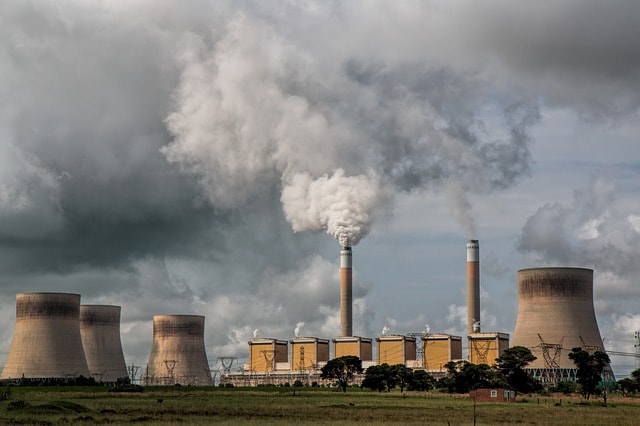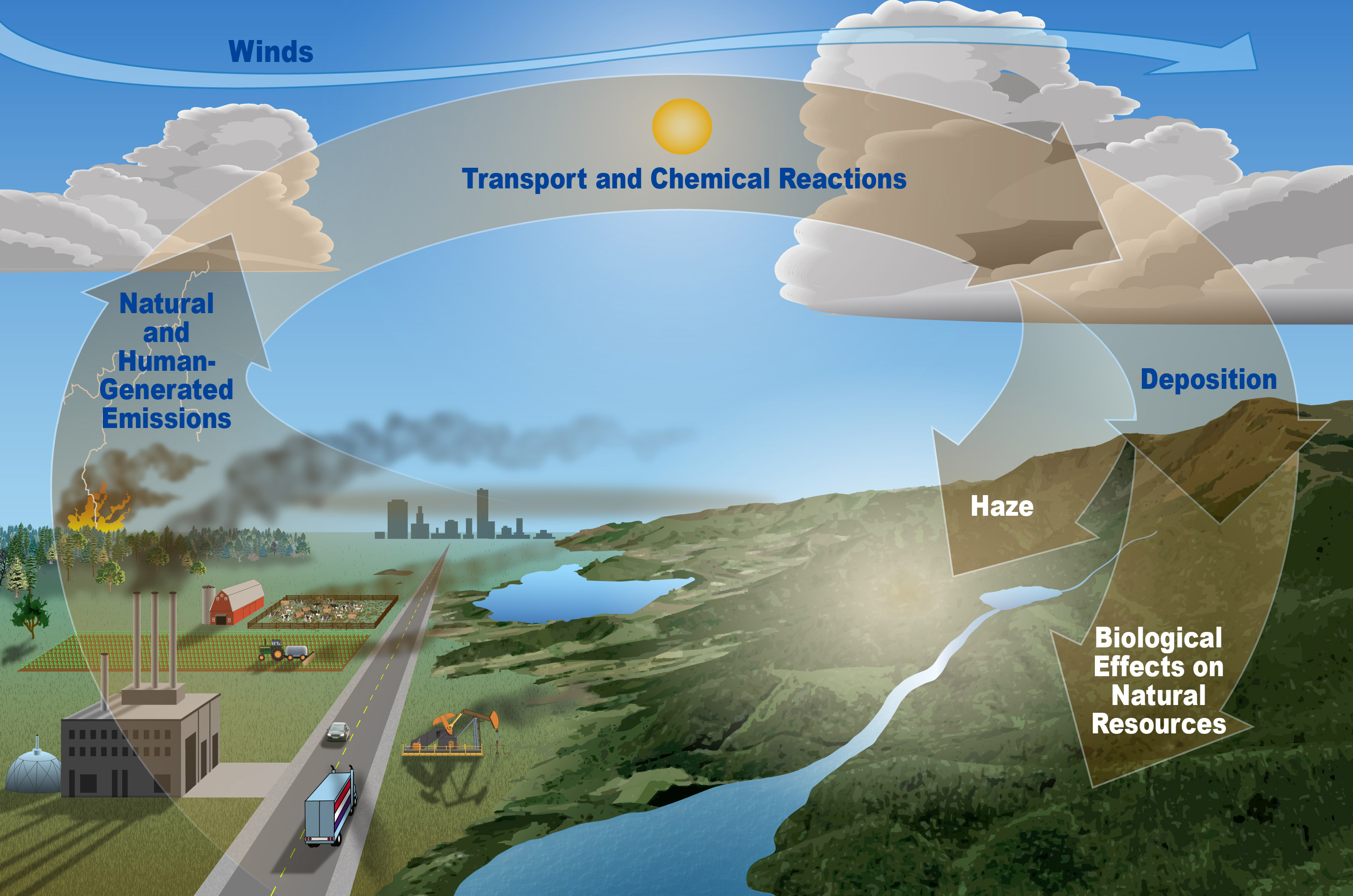On February 2013 Ella Kissi-Debrah, a 9 nine-year-old girl died of what was thought to be respiratory failure due to a severe asthma attack.
However, Rosamund Adoo-Kissi-Debrah, Kissi-Debrah’s mother believed otherwise. Years later, after much researching and hard work powered by sheer dedication, a report was compiled. It showed that her severe asthma attacks coincided with the fluctuating and dangerously high levels of air pollution near her residence. After taking the scientific report into consideration, the court granted an inquest to decide upon a court ruling. This made Ella Kissi-Debrah the first person with the prospect of having “air pollution” as her legal and written direct cause of death.

However, Ella Kissi-Debrah isn’t the only one to have suffered from air pollution. In fact, every year 543,000 children under the age of 5 die from respiratory diseases linked to air pollution, according to the World Health Organization (WHO). All around the world, children between the ages of 5-18 have asthma due to factors including air pollution. Apart from this, 1/3rd of the deaths caused by strokes, lung cancer, and heart diseases are due to air pollution. Lastly, scientists have now found links between cognitive impairment and air pollution between both adults and children.
Unfortunately, this continues to be a problem for everyone worldwide, as air pollution is not constricted or limited to one area. In fact, 9 out of every 10 people in the world breathe polluted air! (WHO)

Types of Air Pollutants and their Effects:
Air pollution contains many different pollutants, each of which has its own harmful effects and causes. Air pollutants are divided into two types; primary pollutants and secondary pollutants. Primary pollutants are substances that directly harmful to the atmosphere when released into the atmosphere. Secondary pollutants are substances that must react with primary pollutants and/or the atmosphere to be created and become harmful.
Primary Pollutants:
Carbon oxides are commonly found in the air and contain both carbon monoxide (CO) and carbon dioxide (CO2). Both are considered greenhouse gases as they contribute to the greenhouse effect and increase global warming. Carbon monoxide is known to be toxic to both plants and animals and is released into the air by vehicle emissions. It can cause poisoning which includes the symptoms of dizziness, weakness, confusion, chest pain, upset stomachs, vomiting, and headaches. It can also lead to death when inhaled during sleep.
Nitrogen oxides are also common pollutants in the air. This includes both nitrogen oxide (NO) and nitrogen dioxide (NO2). They are both greenhouse gases and contributors to acid rain. They are created when nitrogen and oxygen combine at hot temperatures. Their release into the atmosphere is caused by the hot exhaust gas from vehicles, power plants, and factories. According to the U.S. Environmental Protection Agency (EPA), the “Clean Air Act” overview states that exposure to nitrogen oxides create respiratory problems that are linked with an increase in emergency hospital visits. Additionally, nitrogen dioxide can severely affect the lungs. It can irritate and inflame the lining of airways causing flare-ups of asthma or Chronic obstructive pulmonary disease (COPD). Symptoms can include coughing and having difficulty breathing. It can make one more susceptible to respiratory infection or reactions to allergens. Lastly, the elderly and children are more at risk from them.

Sulfur oxides are also major pollutants. They include both sulfur dioxide (SO2) and sulfur trioxide (SO3). Sulfur oxides are created when coal is burned and reaches the air. They are major components of acid rain. Sulfur dioxide can cause health problems, especially among people with other heart or lung conditions. Sulfur dioxide can worsen and harm one’s lungs and respiratory system. It can irritate the lining of the nose, throat, and lungs and reduce the flow of air to the lungs by constricting and narrowing the airway passages. Additionally, it inflames the lungs, thus increasing mucus and causes coughing. It causes people to become more susceptible to chest infections. It worsens conditions such as asthma and COPD, making people with these conditions more sensitive towards it. High concentrations of this will cause flare-ups to take place and result in having difficulty breathing for those with asthma and COPD.
Lead is also a harmful air pollutant. It was once widely used and can cause brain damage or blood poisoning. When present in the body at high concentration can cause immune system problems, reproductive issues, kidney diseases, and cardiovascular issues. Young children and in fact are most sensitive and susceptible to it.
Volatile organic compounds (VOCs) are also pollutants. They include a dioxin a persistent and dangerously toxic chemical. It can be absorbed into human fat and remain there for long periods of time. The World Health Organization (WHO) believes that the lower concentrations in the air can cause skin lesions and affect the liver, immune, nervous, endocrine and reproductive systems.
Lastly, particulates are present to a large scale amidst the air. These are solid particles consisting of ash, dust, fecal matter as well as other waste. They are mostly formed by the combustion of fossil fuel and produce smog. They are also known as particulate matter (PM) which is defined by the EPA as a term that meant, “a mixture of solid particles and liquid droplets found in the air”. There are two common particulate matters; “PM10” and “PM2.5” the respective numbers representing the number of micrometers. The size of the particle is linked to how big the health threat it is. The smaller the particle, the easier it is for it to slip through the body’s defense systems. PM10 can reach into one’s airways. However, PM2.5 poses a greater threat since its size is smaller. It can pass through the lungs into the bloodstream and carry toxic chemicals that are linked to causing cancer. It can worsen asthma and other heart conditions by irritating the nose, throat, and lungs. It may cause early deaths from lung cancer or heart disease. Evidence from scientists shows that it can also cause the development of lung cancer and asthma. Once PM2.5 gets into the respiratory tract and into the lungs it can cause short-term symptoms/problems such as the shortness of breath and irritation of the eyes, nose, throat, and lungs. Long-term exposure to particulate matter pollution results in the following health issues; decreased lung function, worsened asthma, increased respiratory symptoms (coughing or difficulty breathing), development of chronic bronchitis or chronic obstructive lung disease, irregular heartbeat, nonfatal heart attacks, and premature death in people with heart or lung disease.

Secondary Pollutants:
Ozone, also known as O3, is a greenhouse gas and secondary pollutant. It is created when a chemical reaction takes place between the vehicle exhaust and in the presence of the sun. It is considered one of the most dangerous pollutants. Because it is such a harsh irritant, it narrows the airways, making it harder for the respiratory system to obtain oxygen thus making it work harder. Ozone is a major cause of asthma and trigger symptoms among people with asthma. Higher levels of it a lower lung capacity and cause discomfort and pain breathing and coughing. It can reduce resistance to infection and cause weakness, fatigue, chest pain, and nausea. Higher levels of ozone are linked to asthma and COPD related health-issues and admittance to the hospital. After immediate exposure, short-term health issues can result, such as skin irritation and irritation to the respiratory system.
Conclusion:
Air pollution is a man-made issue. Due to mankind’s love for technological advancements of comfort and ease, we have created an issue of grave importance. It is because of this ‘gradual rotting of our air’ that humans all around the globe are suffering. Air pollution isn’t simply a hazard, it’s a man-made killer. We are the ones who created this problem, thus the responsibility of fixing it lies on our shoulders. How many more lives must be lost before we realize our error? It’s time to end this.

Haniyah is an aspiring writer and science lover. She was raised in California and recently moved to Pakistan. She is currently studying her ‘O’ levels in Lahore. She is an avid fan of literature and loves to read. She is passionate about horseriding and spends her free time painting and horseriding. She is interested in robotics and has mentored a robotics team. Additionally, she has taken part in many robotics competitions, both international and local

